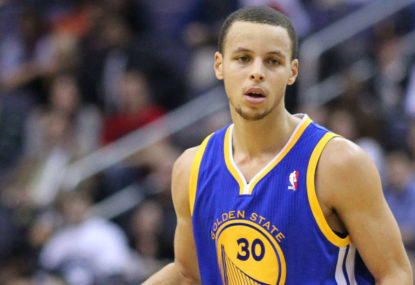Not everybody loves Draymond: Very few options left for Warriors as dynasty disintegrates
The last people to realise or even recognise a dynasty is over are the former champions themselves. Golden State’s golden era is over despite…

Five years ago, the idea that a team could win an NBA Championship while relying on their outside shooting was outlandish. Scoring inside won playoff series. Dominating in the paint was what mattered most.
The Golden State Warriors put that idea to bed when they won the NBA Finals in 2015, bombing away from outside on their way to the franchise’s first championship since 1974-75.
Of all teams in last year’s playoffs, the Warriors were the most shot-happy from deep, with 36.2 per cent of their field goals coming from distance.
For some perspective, the percentage of three-point field goals attempted in the playoffs for the previous five champions were: 26.7 (San Antonio, 2014); 26.4 (Miami, 2013); 25.8 (Miami, 2012); 29.7 (Dallas, 2011); and 25.5 (Los Angeles, 2010).
Golden State’s group of Steph Curry, Klay Thompson, Harrison Barnes, Andre Iguodala and Draymond Green – a selection of three-point shooters ranging from reliable to unfairly awesome – had proved just how valuable the three-point shot could be.
To make an over-dramatic cliche of it, they changed the game.
But despite the Warriors’ offensive brilliance, the defending champions are now staring down the barrel of a playoff exit at the hands of the Oklahoma City Thunder.
While Golden State revel in the play of their aforementioned small-ball line-up, OKC have a towering frontcourt rotation of Serge Ibaka, Steven Adams and Enes Kanter. The Thunder like to shoot the three but their strength comes from their rebounding.
No side rebounded the ball better in 2015-16 than OKC, who averaged 48.6 rebounds per game during the regular season. For the Western Conference Finals against the Warriors, it’s improved slightly to reach 49 per game.
Golden State, on the other hand, have regressed in the area they so excelled in during the regular season, their three-point percentage dropping from 41.6 to 35.5 in the series against the Thunder.
This is what the nay-sayers of yesteryear would always point to when criticising the effectiveness of three-point shooting. It might work during the regular season, but the playoffs are a different beast entirely. The game slows down, defence tightens up, and players miss more shots.
Pushing the ball inside limits that shooting drop-off and also allows a team to rebound their own misses with greater frequency. You don’t get many rebounds at the three-point line.
Admittedly, 35.5 per cent is still a very respectable clip from range. What’s causing the Warriors all their trouble is how their smaller line-up has struggled to rebound the ball. Golden State were the fourth-best rebounding team during the regular season. Against the Thunder, they’ve been dominated on the glass, pulling down, on average, 7.2 fewer rebounds than their opponents.
That includes their Game 2 win, when the Warriors out-rebounded the Thunder 45 to 36.
Most of the team stats from the Western Conference Finals have Golden State and OKC neck-and-neck. Field goal percentage is close (45.6 to 44.3 respectively), and three-point percentage is even closer (35.2 to 35.5). Assists (22 to 21.5) and turnovers (14.5 to 15.3) tell a similar tale.
Yet OKC are dominating this series, just as they are the glass. They’re averaging seven more rebounds per game than the Warriors and are one game away from a trip to the NBA Finals.
For all that basketball has changed in the past decade, for all the importance the three-point shot has gained, the old idea that rebounding will win you more games than not still rings true.